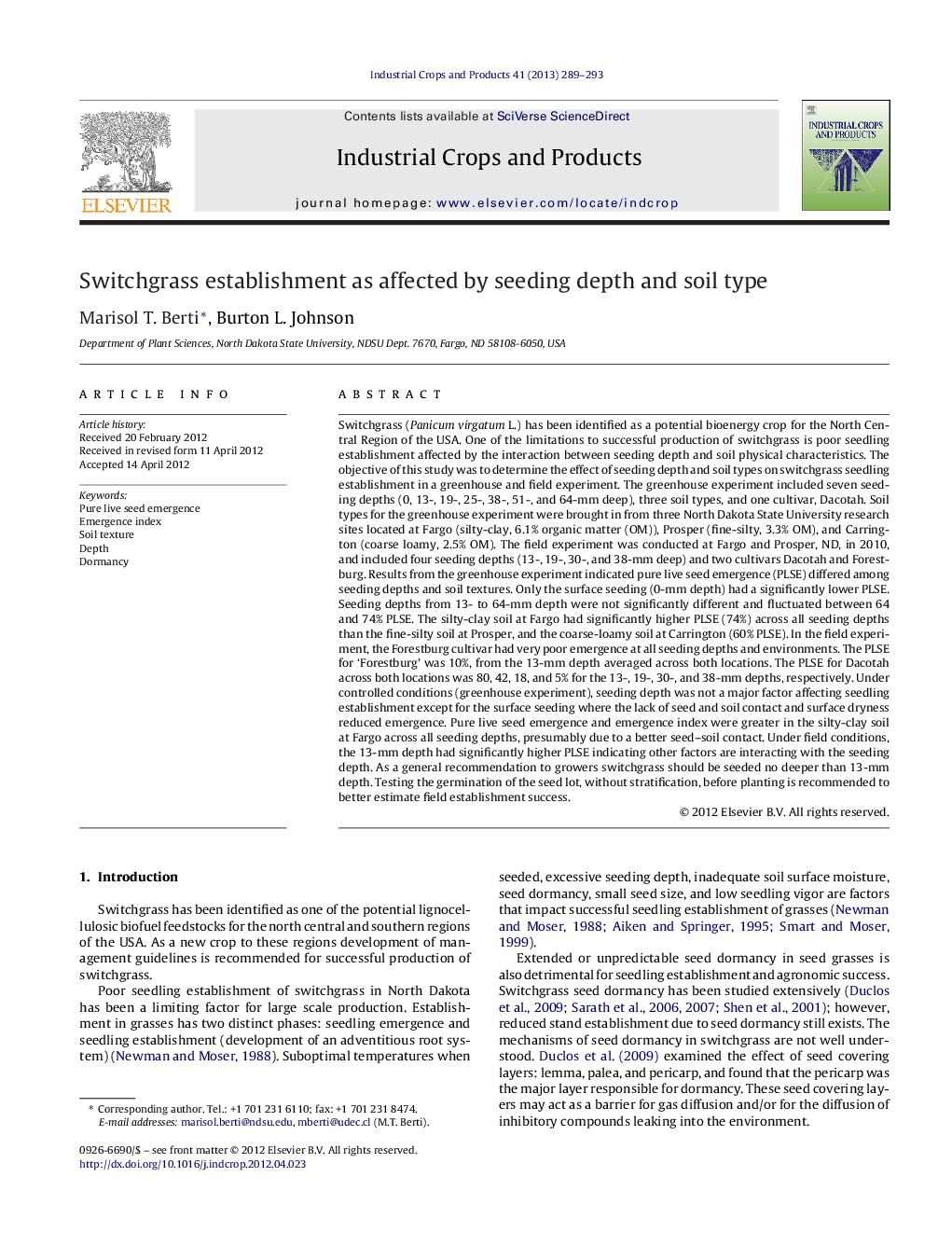| Article ID | Journal | Published Year | Pages | File Type |
|---|---|---|---|---|
| 4513922 | Industrial Crops and Products | 2013 | 5 Pages |
Switchgrass (Panicum virgatum L.) has been identified as a potential bioenergy crop for the North Central Region of the USA. One of the limitations to successful production of switchgrass is poor seedling establishment affected by the interaction between seeding depth and soil physical characteristics. The objective of this study was to determine the effect of seeding depth and soil types on switchgrass seedling establishment in a greenhouse and field experiment. The greenhouse experiment included seven seeding depths (0, 13-, 19-, 25-, 38-, 51-, and 64-mm deep), three soil types, and one cultivar, Dacotah. Soil types for the greenhouse experiment were brought in from three North Dakota State University research sites located at Fargo (silty-clay, 6.1% organic matter (OM)), Prosper (fine-silty, 3.3% OM), and Carrington (coarse loamy, 2.5% OM). The field experiment was conducted at Fargo and Prosper, ND, in 2010, and included four seeding depths (13-, 19-, 30-, and 38-mm deep) and two cultivars Dacotah and Forestburg. Results from the greenhouse experiment indicated pure live seed emergence (PLSE) differed among seeding depths and soil textures. Only the surface seeding (0-mm depth) had a significantly lower PLSE. Seeding depths from 13- to 64-mm depth were not significantly different and fluctuated between 64 and 74% PLSE. The silty-clay soil at Fargo had significantly higher PLSE (74%) across all seeding depths than the fine-silty soil at Prosper, and the coarse-loamy soil at Carrington (60% PLSE). In the field experiment, the Forestburg cultivar had very poor emergence at all seeding depths and environments. The PLSE for ‘Forestburg’ was 10%, from the 13-mm depth averaged across both locations. The PLSE for Dacotah across both locations was 80, 42, 18, and 5% for the 13-, 19-, 30-, and 38-mm depths, respectively. Under controlled conditions (greenhouse experiment), seeding depth was not a major factor affecting seedling establishment except for the surface seeding where the lack of seed and soil contact and surface dryness reduced emergence. Pure live seed emergence and emergence index were greater in the silty-clay soil at Fargo across all seeding depths, presumably due to a better seed–soil contact. Under field conditions, the 13-mm depth had significantly higher PLSE indicating other factors are interacting with the seeding depth. As a general recommendation to growers switchgrass should be seeded no deeper than 13-mm depth. Testing the germination of the seed lot, without stratification, before planting is recommended to better estimate field establishment success.
► Seeding depth and soil type affect pure live seed emergence of switchgrass. ► Switchgrass should be seeded no deeper than 13-mm depth. ► Cultivar seed dormancy will affect pure live seed emergence and field establishment.
